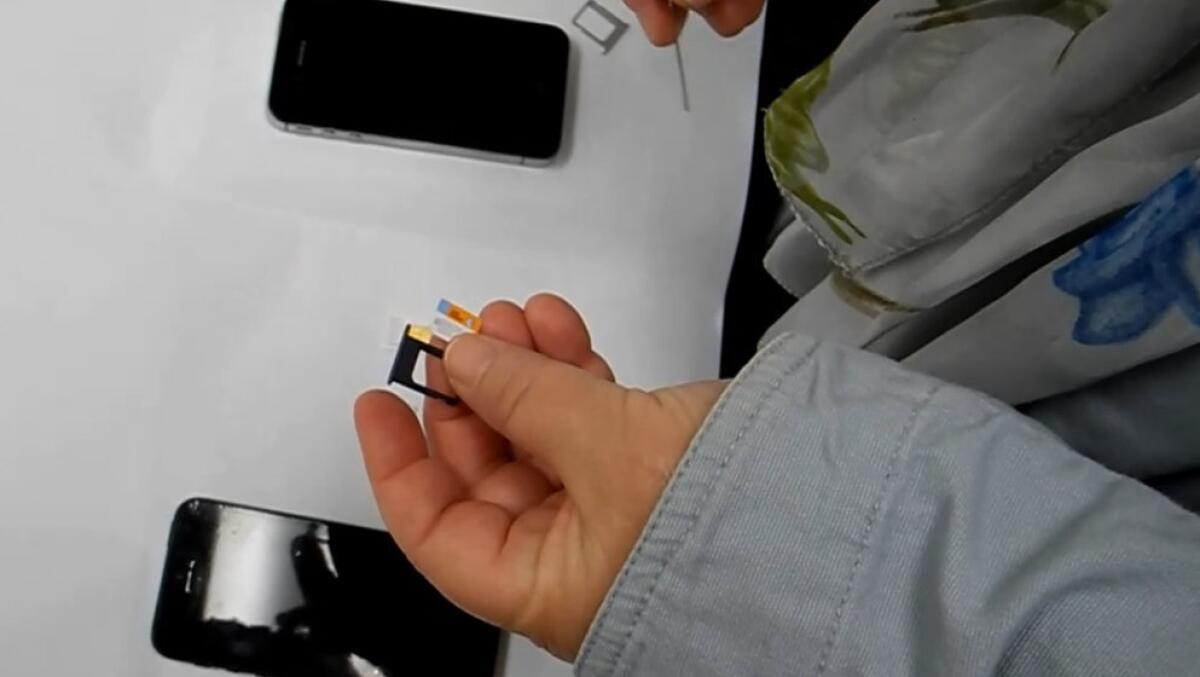How to swap a smartphone SIM for cheaper voice, data service abroad

- Share via
Now that the iPhone 6 and iPhone 6 Plus are out, you may be thinking of ditching your older smartphone. If you’re an international traveler and you don’t have an international data plan, don’t.
Here’s why: If you have a smartphone and no international plan, you’ll run up huge bills if you use it abroad.
Instead, you can use your old phone so you can call, send a text, check your email, post to social media even when you’re out of the country.
To do this, you need two things: an unlocked phone and a SIM card.
An unlocked phone means that you are not tethered to any particular service provider. If you have paid off your phone, your service provider should do this for you.
By paying off the rest of the cost of my phone — a cost that generally is spread out over the life or your contract — I was able to get my service provider to unlock my iPhone 5 last summer. My service provider gave me detailed instructions.
Like most anything that has to do with a smartphone, it was complicated but not difficult.
Now I could choose any service provider I wanted, even one overseas. Using a local provider abroad would allow me to do all the same things I do with my smartphones at home but without incurring big charges.
I’ve now successfully swapped out SIMs — the small card that allows you to connect to a service provider — in three smartphones: an older BlackBerry Curve, an iPhone 4s and an iPhone 5.
As the video above shows, the BlackBerry swap is easy. It requires removing the battery cover from the phone, pulling out the battery and getting the little SIM card holder mechanism to open. (You’ll see that I had a little confusion at first, but it’s really pretty intuitive.)
The iPhones aren’t quite as easy because the location of the SIM isn’t apparent.
Case in point: A super-smart friend and I were talking about our calling options abroad, and I suggested he swap out his SIM on his unlocked iPhone. He said he couldn’t do that because he didn’t know where it’s hidden. (Note that on some older Verizon iPhones, you won’t find that tray because there isn’t one.)
If you look closely at the side of the phone, you’ll see the outline of a tiny tray. You’ll know that’s what it is because there’s a small hole.
You can buy a small tool that helps open the tray easily. (Search for a SIM card ejection tool. It costs about $2.) You can also bend a small paper clip and use one end of the wire. You do have to use a little more pressure than you might think, but the tray will come out.
If you’re concerned about getting the SIM card installed properly, you probably need not worry. The SIM card has a notch and so, generally, will the phone receptacle into which you’re inserting the card.
Note in the demo video in which the SIM is re-inserted into the tray, I have a little trouble the first time. I didn’t have it seated completely right, so if you encounter any resistance, try re-seating the card. That’s what happens in the video and once the SIM properly placed in the tray, it slides in. Don’t force it.
If you walk into a local mobile phone store, the person selling you the SIM will install it for you. If you’re pre-ordering through a company such as Telestial, Brightroam or Cellular Abroad, make sure you know what size you need. (See video for explanation.)
The last question you’ll want to ask: Is all this really necessary? Depends on the user. You could just use Skype or another VoIP service to call home, but that requires Wi-Fi. I’ve done that and it worked well.
You could buy an inexpensive phone locally (just a flip phone, not a smartphone) and use that for calls and texts. I’ve done that too.
You can rent a phone. I’ve never done that but it’s an option.
But I cling to my smartphone. It’s a huge help in my day-to-day life at home, so why would I want to be without it when I’m in unfamiliar surroundings? I don’t. And with work and family issues that crop up, I want to be in touch.
The local cards are cost-effective. The international cards — such as the ones from Cellular Abroad — will cost you more but you have connectivity the minute you hit the ground.
With any smartphone card, remember that you need voice and data. I burned through a lot of data very quickly with my Cellular Abroad international SIM card this summer in Bermuda because Wi-Fi was spotty. It was expensive, just like everything else in Bermuda. Eventually, I turned off the data and relied on Wi-Fi when I could get it.
What works for you? Email me at travel@latimes.com and tell us about your best tools for staying in touch abroad.
Follow us on Twitter at @latimestravel
Sign up for The Wild
We’ll help you find the best places to hike, bike and run, as well as the perfect silent spots for meditation and yoga.
You may occasionally receive promotional content from the Los Angeles Times.




